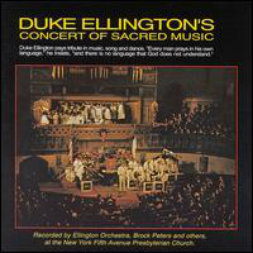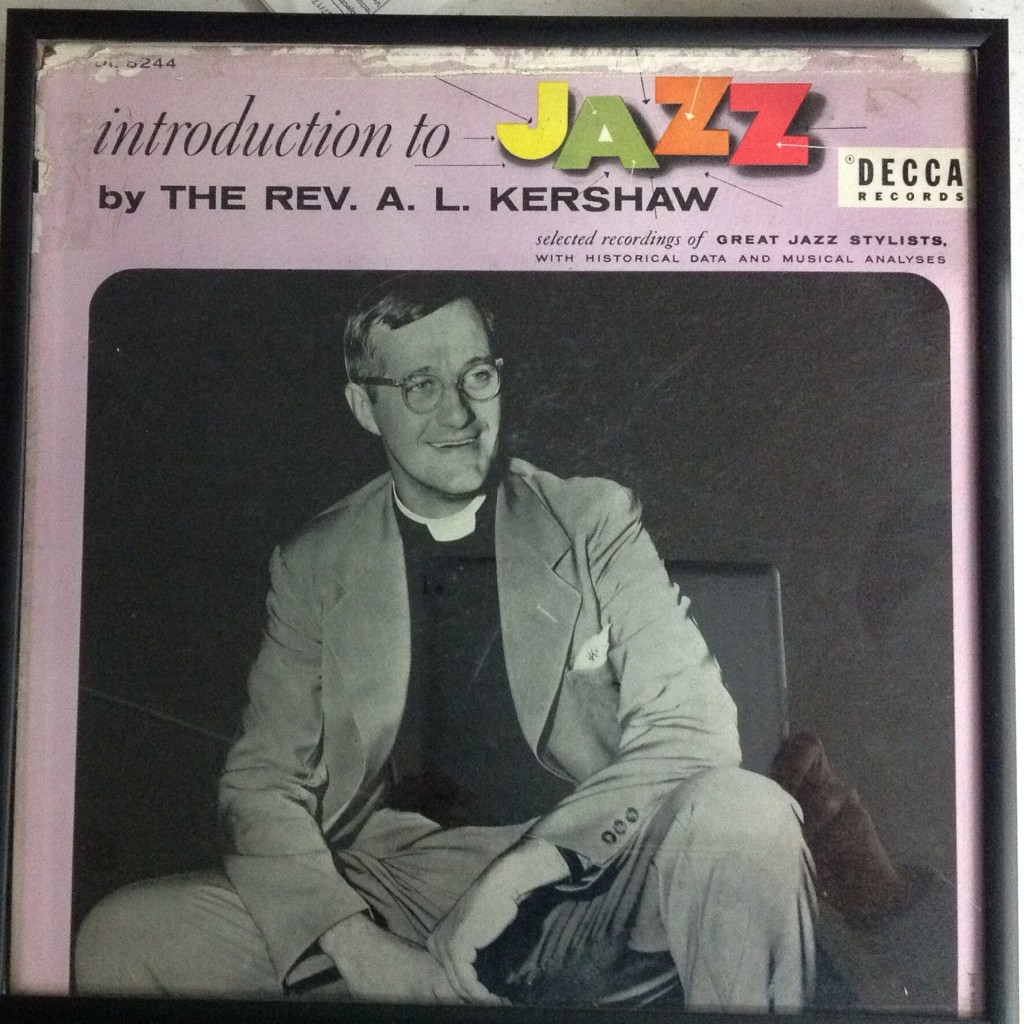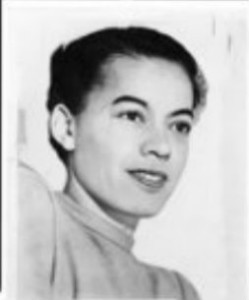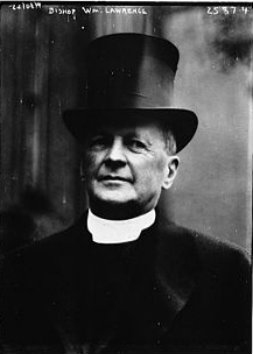December 11. The Rev. Al Kershaw officiated in Lindsey Chapel at our first same-sex wedding. Richard Bentley and Grahame Smith were joined in holy matrimony. Byrd Swift was subdeacon and Andrew Castiglione played organ.
Tag Archives: rectors
1969
- J. Barkev Kassarjian joined our vestry. His wife Mary Catherine Bateson gave birth to their daughter Savanne (Vanni) Margaret, who was baptized here.
- April 20. Edward Kennedy “Duke” Ellington‘s Second Concert of Sacred Music, sponsored by the Episcopal Chaplaincy at Harvard and Radcliffe, was performed for a large audience in our Sanctuary with our ninth rector, The Rev. Al Kershaw presiding. Please see Wikipedia for information about this and Ellington’s other sacred concerts.
1963
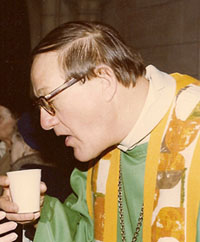 The Rev. Alvin L. Kershaw became our ninth rector. He had previously served as rector of Christ Church Episcopal Church in Bowling Green, Kentucky (1944 – 1947); Holy Trinity Episcopal Church in Oxford, Ohio (1947 – 1956); and All Saints Episcopal Church in Peterborough, New Hampshire (1956 – 1963).
The Rev. Alvin L. Kershaw became our ninth rector. He had previously served as rector of Christ Church Episcopal Church in Bowling Green, Kentucky (1944 – 1947); Holy Trinity Episcopal Church in Oxford, Ohio (1947 – 1956); and All Saints Episcopal Church in Peterborough, New Hampshire (1956 – 1963).
1957
6 Oct. The Rt. Rev. Anson P. Stokes installed The Rev. Harold Bend Sedgwick as our eighth rector.
The rectory at 10 Chestnut St. was sold and an apartment at 388 Beacon St. was bought for his residence. For more about the Sedgwick years please see the chapter on him in Emmanuel Church, 1860-1960: The First Hundred Years.
1956
The Rev. Alvin Louis Kershaw‘s album Introduction to Jazz was released by Decca Records. According to the guide to his papers donated by his widow Doris to the U. of Southern Mississippi’s McCain Library and Archives, the University of Mississippi (Ole Miss) had invited him to speak in February 1956:
on the subject of jazz, an area in which he was considered something of an expert. In the meantime, [he had become] a contestant on the television quiz show The $64,000 Question, where his expertise in the field of jazz helped him to win $32,000. In an interview after the program, he alluded to the possibility of donating a portion of his winnings to the National Association for the Advancement of Colored People (NAACP) to aid in the battle against segregation. When word of this reached Mississippi, the Rev. Kershaw became the target of a firestorm of criticism, which eventually led to cancellation of his scheduled visit to Ole Miss.
Our archive has a copy of the record, which contains “Selected recordings of great jazz stylists, with historical data and musical analyses” and these tunes:
- Snag it (King Oliver’s Savannah Syncopators)
- Wild man blues (Johnny Dodds’ Black Bottom Stompers)
- I’ve found a new baby (Chicago Rhythm Kings)
- Tin roof blues (New Orleans Rhythm Kings)
- Davenport blues (Adrian Rollini’s Orchestra)
- The blues jumped a rabbit (Jimmy Noone’s New Orleans Band)
- Five point blues (Bob Crosby’s Bob Cats)
- Perdido Street blues (Louis Armstrong)
- Georgia cake walk (Art Hodes and his band)
- Impromptu ensemble no. 1 (Bobby Hackett et al.)
- Tishomingo blues (Bunk Johnson)
- Chimes blues (George Lewis and his Ragtime Band).
1955
1 July. The Rev. David Siegenthaler arrived to serve as curate under Rector Robert Metters. When Metters retired in 1956, he served for a year as priest in charge.
Renovations of the Parish House and Sanctuary, which had cost more that $115,000, were completed.
See also Timeline post: 2021
1946
- 16 Jan. The Rev. Robert Gifford Metters, who had served as a Navy chaplain during World War II, became our sixth rector.
- Mademoiselle awarded Pauli Murray its Merit Award for Signal Achievement in Law.
- Albert W. Rockwood, Chairman of our Property Committee, contracted with Chester A. Brown at the architectural firm of Cram & Ferguson to draw up plans for renovations for our:
- Basement
- A concrete floor was poured.
- Bathrooms were installed.
- Alternating current was installed to control two huge boilers, which were converted from burning coal to oil.
- A boys’ choir room was created.
- Sanctuary
- Carpeting in the nave was replaced with brown, vinyl-asbestos tiles.
- Pews were repaired.
- Brides’ Lobby was redesigned.
- Parish House
- The kitchen was renovated.
- Cold-water service was replaced.
- A separate heating-zone was probably established then.
- Basement
–Thanks to Julian Bullitt for researching these topics in our archives.
1936
December 13. Celebration of our 75th Year
Our fifth rector, The Rev. Dr. Phillips Endicott Osgood, said in his sermon: “We are stewards of an inheritance, interpreters of a tradition”. Organist Dr. Albert Snow composed an anthem for the service. Bishop William Lawrence praised our first four wardens:
- Edward Sprague Rand (1st senior warden), a trustworthy, public-spirited lawyer
- his uncle William Richards Lawrence (1st junior warden), who had bought the land for our church
- Benjamin Tyler Reed (2nd senior warden), who founded in Cambridge the Episcopal Theological School, which became the Episcopal Divinity School
- Enoch Reddington Mudge (2nd junior warden), who later built St. Stephen’s Church, Lynn
For more detail, see Boston Globe, Dec. 14,1936, p. 4: “Bishop Lawrence in Tribute to Early Emmanuel Wardens. Services Celebrate 75th Birthday of Church. Dr. Osgood Views Future”.
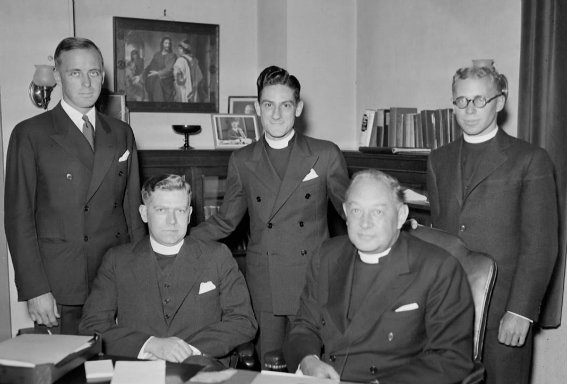
Seated on the right at his desk in our Emmanuel Room is Dr. Osgood with The Rev. Ivol Ira Curtis (center), who became Bishop of Olympia.
1929
Upon the planned retirement of The Rev. Elwood Worcester, The Rev. Dr. Benjamin Martin Washburn became rector. For more about the Washburn tenure during the Great Depression, please see the chapter on him in Emmanuel Church, 1860-1960: The First Hundred Years.
This image of “The Emmanuelists” honors men associated with the Emmanuel Movement during Worcester’s rectorship: (top row) William James, Richard C. Cabot, Joseph Hersey Pratt, Pierre Janet & (bottow row): Lyman Pierson Powell, Samuel McComb, Elwood Worcester, Isador Coriat, and Courtenay Baylor.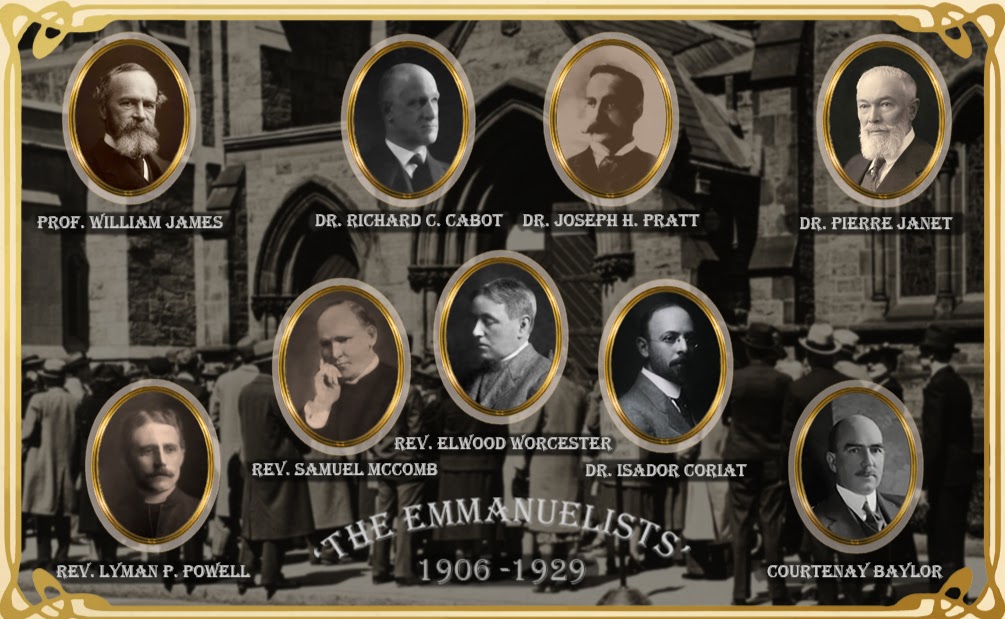
1919
- Mary Robeson Sargent died of diabetes at the age of 66.
- Courtenay Baylor (1870-1947) published Remaking a Man: One Successful Method of Mental Refitting (NY: Moffat, Yard), full text. Recently helped by our fourth rector Elwood Worcester, Baylor gave up his insurance business to join the Emmanuel staff in 1912. Under Worcester’s supervision he became a lay therapist for alcoholics.
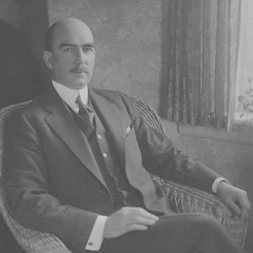
In 1925 he and Worcester formed the Craigie Foundation to continue their work privately in anticipation of Worcester’s retirement from Emmanuel Church in 1929. In his book, Baylor claimed he had success with about two thirds of a thousand patients. Through his patients Rowland Hazard and Richard R. Peabody he influenced William Wilson, a founder of Alcoholics Anonymous.
For more information on Baylor’s contribution see:
- “The Continuation of Therapy: Courtenay Baylor and Richard R. Peabody”, pp. 35-59 in Richard M. Dubiel, The Road to Fellowship: The Role of the Emmanuel Movement and the Jacoby Club in the Development of Alcoholics Anonymous (NY:iUniverse for the Hindsfoot Foundation, 2004).
- “Worcester in Retirement and Successors to the Emmanuel Movement”, pp. 99-108 in Sanford Gifford, The Emmanuel Movement: The Origins of Group Treatment and the Assault on Lay Psychotherapy (Boston: Harvard U. Press for the Francis Countway Library of Medicine, 1997).
- “Early alcoholism treatment: the Emmanuel Movement and Richard Peabody”, K. McCarthy. Journal of Studies on Alcohol 45(1):59-74, Jan. 1984. PMID: 6366377.


